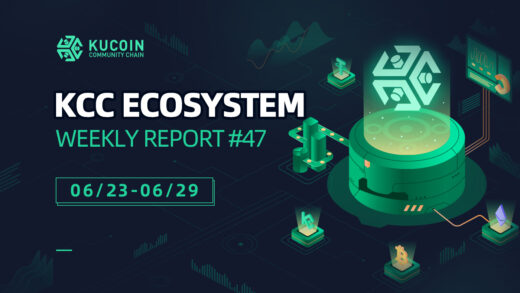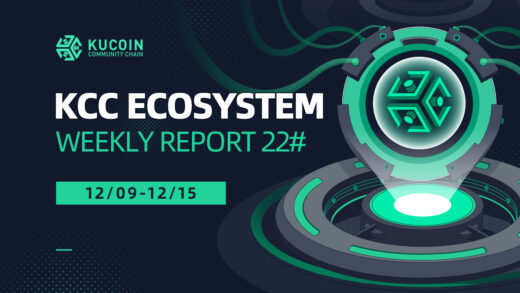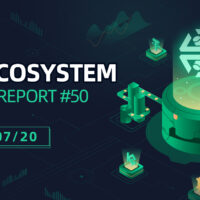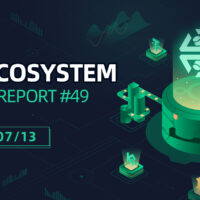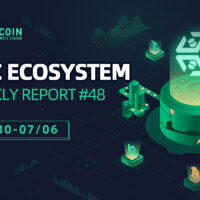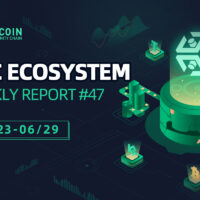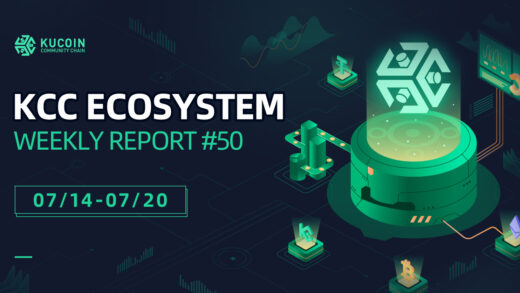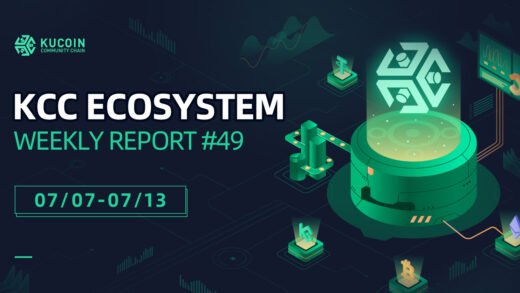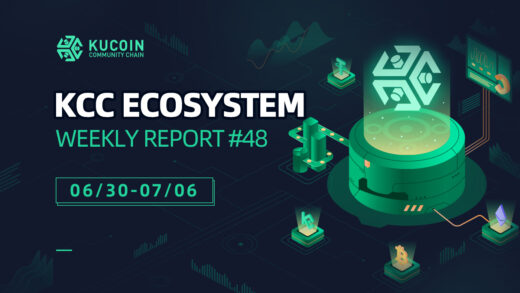KuCoin Community Chain (KCC) hosted an AMA (Ask-Me-Anything) session with Louis, COO of Klein Finance, discussing the next explosion of KCC Ecosystem. If you missed the AMA, you may check the full transcript here.
Time: May 26, 2022 at 2:00PM UTC.
Host: KCC
Guests: Louis — COO of Klein Finance
Q1: Could you please introduce Klein Finance to our community?
Louis: Klein Finance is used to provide liquidity and trade KRC20 tokens on the KCC chain. Klein Finance is a safe and efficient decentralized trading platform for digital assets. It aims to make digital assets safe and stable with low slippage, good depth, low transactions fee on-chain environment and stake for rewards. The trading model is a mixed liquidity pool, which provides a cross-market mechanism for creating stablecoins, which can meet the requirements of multiple stablecoins vs. non-stablecoins and multiple non-stablecoins vs. multiple non-stable tokens.
Q2: Why did Klein Finance choose AMM with dynamic peg?
Louis: Klein Finance provides a mechanism to create cross-markets for stablecoins in what could be called “Uniswap with Leverage”.Its immutability allows most of the liquidity to be concentrated around the price of 1.0 (or any real price), and this is a very useful feature for creating liquidity between stablecoins.
The AMM with dynamic peg method creates liquidity for assets which aren’t necessarily pegged to each other in a way more efficient than m · n = λ invariant.This creates more than 5–10 times more liquidity than Uniswap and provides higher profits for liquidity providers.
Q3: What problems does Klein Finance solve?
Louis: (a) It inherits the advantages of StableSwap’s ultra-low slip point and aggregation liquidity near the “equilibrium point”.
(b) By fitting between the constant product curve and the StableSwap curve and to the constant product curve in the middle and tail area of the curve, the advantage of the constant product curve in rapid response to liquidity changes is obtained, to avoid the depletion of pool liquidity and respond flexibly to rapid market changes.
Q4: What are liquidity pools?
Louis: Klein Finance provides liquidity pools to the market and rewards users who provide liquidity (also known as liquidity providers). Klein Finance charges a small fee for each transaction, and a part of the collected fee is shared equally by all liquidity providers.
If you are new to DeFi, liquidity pools are a seemingly complicated concept to understand.
Liquidity pools are pools of tokens that sit in smart contracts. If you were to create a pool of DAI and USDC where 1 DAI = 1 USDC. You would have the same amount of tokens, let’s say 1,000 tokens (1,000 DAI and 1,000 USDC) in the pool.
If trader 1 comes and exchange 100 DAI for 100 USDC, you would then have 1,100 DAI and 900 USDC in the pool so the price would tilt slightly lower for USDC to encourage another trader to exchange USDC for DAI and average the pool back.
Q5: Klein Finance has three types of transaction pools. What are they?
Louis: Klein Finance supports integration with other DeFi protocols, and Klein’s liquidity pools are divided into three types:
1. Meta pools: a liquidity pool composed of a stablecoin and a Base Pool. The purpose of this liquidity pool is to reuse the stablecoins with higher capital utilization and better pool depth in the Base Pool.
2. Stablecoin pools: It supports 2 to 4 stablecoin trading liquidity pools. Adding liquidity to spot trading AMM helps reduce slippage. It is very common to swap one type of stablecoin for another. It is important to reduce slippage on these types of trades.
3. Plain pools: support 1 stablecoin and 1 non-stablecoin trading liquidity pool.
Q6: What is the KEN token?
Louis: The main purposes of the Klein DAO token are to incentive liquidity providers on the Klein Finance platform as well as getting as many users involved as possible in the governance of the protocol.
Currently KEN has three main uses: voting, staking and boosting. Those three things will require you to vote lock your KEN and acquire veKEN.
Q7: What is Transaction Mining of Klein Finance?
Louis: According to certain reward rules, Klein Finance will reward traders, liquidity providers, and partners in the expectation of working together to achieve the enhanced protocol goals. Klein Finance has built a robust ecosystem around governance, rewards, and staking. All designed to drive future growth and decentralization of Klein Finance and resulting in a better experience for users.
KEN = individual transaction volume / total transaction volume * KEN output (total transaction volume is the total transaction volume that has not been rewarded)
The number of xTokens rewarded by the transaction will change with the total transaction volume. When the total transaction volume increases, the number of xTokens that an individual can receive decreases; when other people receive KEN rewards, their transaction volume will be reduced from the total transaction volume. At this time, the number of xtokens that individuals can receive increases.
Q8: What is Staking Mining of Klein Finance?
Louis: By depositing funds into the on-chain liquidity pool, liquidity providers can obtain transaction benefits, which support additional benefits for liquidity providers while improving the utilization of funds.
Users stake LP to obtain mining rewards. The contract will be rewarded according to different LPs and the number of staking. The basic reward is set to 1 time, and veToken can be used to accelerate the reward up to the maximum of 3.3 times.
Q9: What are veKEN generation rules?
Louis: 1. Stake KEN to obtain veKEN, the longer the lock-up time of xToken, the more veKEN it will obtain, for example: 1 KEN locked for 4 years can get 1 veKEN, and KEN locked for 1 year can only get 0.25 veKEN.
As the token approaches the lock-up expiration, the balance of veKEN will decrease linearly, which can motivate long-term staking and promote the activity of the community to obtain the highest yield.
2. When the user redeems, the amount of staked KEN will be redeemed.
3. The time function in the lock-up rules: veKEN =KEN *T/4 (T is the lock-up period), that is, the longer you stake xToken, the more veKEN you will receive. User chooses KEN to lock the position for 4 years to 1: 1 to obtain veKEN, the stake and lock-up behavior is irreversible, it cannot be unlocked or transferred during the lock-up period, and veKEN is not tradable.
Q10: What is veKEN generation rules?
Louis: 1. Stake KEN to obtain veKEN, the longer the lock-up time of xToken, the more veKEN it will obtain, for example: 1 KEN locked for 4 years can get 1 veKEN, and KEN locked for 1 year can only get 0.25 veKEN.
As the token approaches the lock-up expiration, the balance of veKEN will decrease linearly, which can motivate long-term staking and promote the activity of the community to obtain the highest yield.
2. When the user redeems, the amount of staked KEN will be redeemed.
3. The time function in the lock-up rules: veKEN =KEN *T/4 (T is the lock-up period), that is, the longer you stake xToken, the more veKEN you will receive. User chooses KEN to lock the position for 4 years to 1: 1 to obtain veKEN, the stake and lock-up behavior is irreversible, it cannot be unlocked or transferred during the lock-up period, and veKEN is not tradable.
Join Klein Finance:
Website: https://klein.finance/
Twitter: https://twitter.com/KleinSwap
Telegram: https://t.me/KleinFinance
Follow us on Twitter >>>https://twitter.com/KCCOfficialTW
Join us on Telegram >>>https://t.me/KCCOfficialEnglishCommunity
Follow us on Medium >>>https://kccofficial.medium.com/

